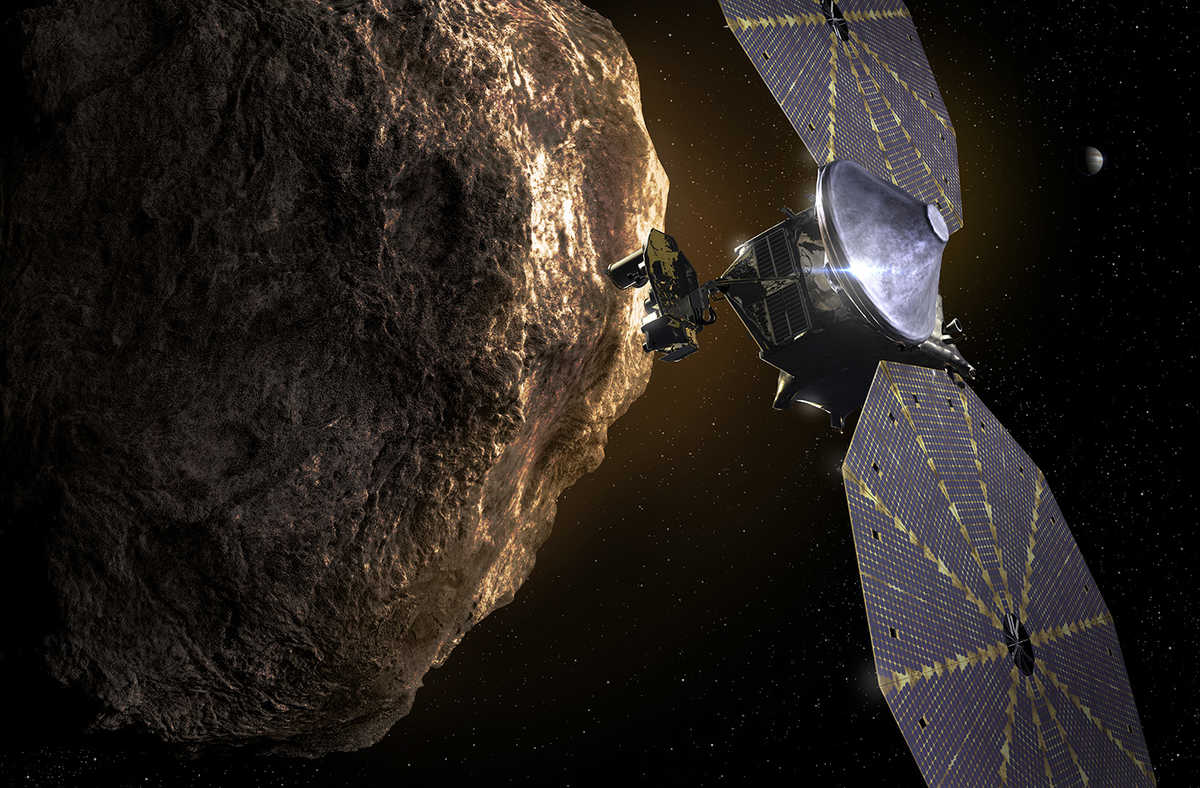NASA | Goddard Space Flight Center | Lucy | 2018 Oct 30
NASA's mission to perform the first reconnaissance of the Trojans, a population of primitive asteroids orbiting in tandem with Jupiter, passed a critical milestone today. NASA has given approval for the implementation and 2021 launch of the Lucy spacecraft.
- This diagram illustrates Lucy's orbital path. The spacecraft’s path (green) is shown in a frame of reference where Jupiter remains stationary, giving the trajectory its pretzel-like shape. After launch in October 2021, Lucy has two close Earth flybys before encountering its Trojan targets. In the L4 cloud Lucy will fly by (3548) Eurybates (white), (15094) Polymele (pink), (11351) Leucus (red), and (21900) Orus (red) from 2027-2028. After diving past Earth again Lucy will visit the L5 cloud and encounter the (617) Patroclus-Menoetius binary (pink) in 2033. As a bonus, in 2025 on the way to the L4, Lucy flies by a small Main Belt asteroid, (52246) Donaldjohanson (white), named for the discoverer of the Lucy fossil. After flying by the Patroclus-Menoetius binary in 2033, Lucy will continue cycling between the two Trojan clouds every six years. (Credits: Southwest Research Institute)
The confirmation review, formally known as "Key Decision Point C," authorized continuation of the project into the development phase and set its cost and schedule. The confirmation review panel approved the detailed plans, instrument suite, budget and risk factor analysis for the spacecraft.
The next major mission milestone, the Critical Design Review, will examine the detailed Lucy system design. After a successful critical design review, the project team will assemble the spacecraft and its instruments. ...
Lucy, the first space mission to study the Trojans, takes its name from the fossilized human ancestor called “Lucy” by her discoverers whose skeleton provided unique insight into humanity's evolution. Likewise, the Lucy mission will revolutionize our knowledge of planetary origins and the formation of the solar system.
Lucy is planned for launch October 2021. During its 12-year journey, the spacecraft will visit seven different asteroids - a Main Belt asteroid and six Trojans. The spacecraft and a remote-sensing instrument suite will study the geology, surface composition, and bulk physical properties of these bodies at close range. ...
viewtopic.php?t=36703






